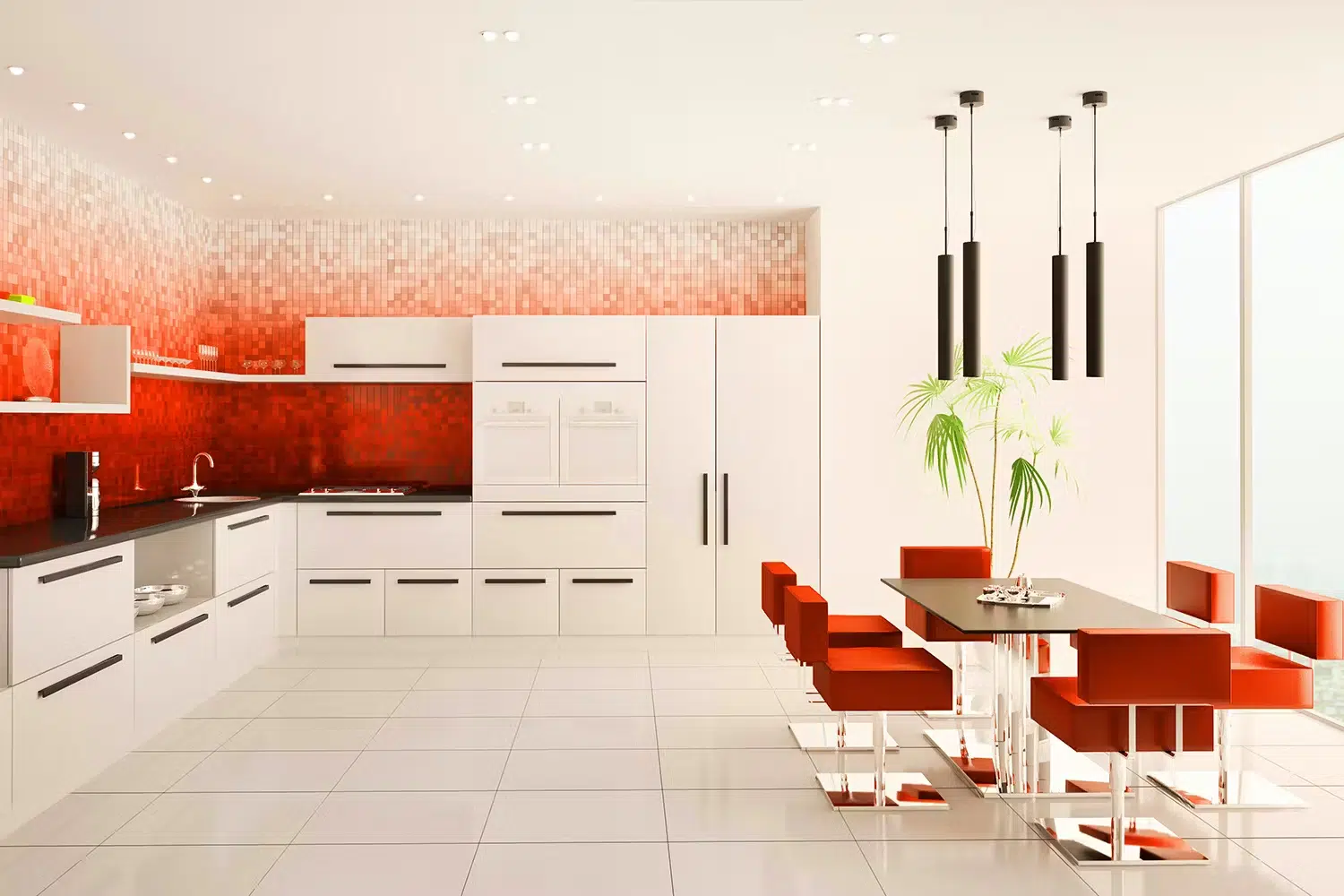
Renovating Your Home? Start with Your Kitchen and Bathroom

Is your home overdue for an upgrade? If you’ve got the itch to make some changes—look at your bathroom and kitchen first.
Why? Because they’re probably the rooms you use the most! While you might spend more time in a living room or bedroom, kitchens and bathrooms have functional purposes—you need these rooms for important daily tasks like showering and cooking. Even small changes can dramatically increase your quality of life at home and maybe even boost your resale value when it comes time to move.
In this article, we’ll break down why these two rooms are great candidates for renovation and how to get the process started.
Put Your Home Equity to Work
Learn more about how you can take advantage of your home’s value for your next home improvement project.
Why remodel your kitchen and bathroom?
It always comes back to their functional purpose. Because they’re worked so hard, they’ll show wear faster, and it will be much more obvious. Think about it—beyond appliances and counters, your kitchen walls, floors, and cabinets are constantly subjected to food, soap, and grease. Your bathroom is subjected to water, soap, hairspray, beauty tools and products—you name it.
Secondly, remodeling these two rooms can dramatically increase your enjoyment of the space! Instead of wishing you had an extra shelf for towels or a bigger counter for food prep, you could actually have and use those things.
Remodeling may also increase the resale value of your home—but this is harder to quantify. Appraisals don’t necessarily take in the value of upgrades, especially if they’re purely cosmetic.
However—kitchens and bathrooms sell houses. They might not like the size of the bedrooms or the back patio, but if they love your kitchen, you might be more likely to land an offer. (Another bonus: kitchen and bathroom remodels are among the most cost-effective home renovations you can do.)
There are a few other reasons why a kitchen and bathroom are two of the best options for a remodel:
- Water damage: Because water is used extensively in these areas, there is a greater likelihood of water damage or mold accumulation. Refreshing these areas makes sense not only from an appearance aspect, but for health considerations as well.
- Technological advances: Innovations and technological leaps forward are constantly being made to appliances and fixtures. As your home ages, you may find yourself using devices that are completely out of date.
- These are the areas that everyone sees: Having guests over? Make your space comfortable! If you’re someone who loves hosting dinners or having weekend guests, your kitchen and bathroom will be on full display.
How to Pay for Your Kitchen and Bathroom Remodels
Have the cash saved up? Great!
Think you’ll need to borrow funds? You have options.
Home Equity Loan
A home equity loan is money borrowed against the equity you have in your home. Because the loan is secured with collateral, financial institutions can offer favorable interest rates that save you in the long run.
Home Equity Line of Credit
A home equity line of credit is similar to a home equity loan. However, instead of getting money in one lump sum that you must repay, you can borrow as you go. You’ll be pre-approved for a maximum amount, but you’ll need to repay and be charged interest on the amount you actually draw from the line of credit.
Cash-out Refinance
Want to fund home improvements while simultaneously refinancing your home mortgage? A cash-out refinance may be a good option. With a cash-out refinance, you’ll pay off your existing mortgage with a larger mortgage that has a more favorable interest rate. The difference between your old and new mortgage is money that can be used at your discretion— including home improvement projects. Remember: you’re essentially taking out a brand-new mortgage, so there will be closing costs and other fees.
Home Improvement Loan
A home improvement loan is a type of unsecured personal loan designed to pay for materials and labor related to home improvement. They’re not as flexible as home equity loans and can require formal involvement from a contractor.
Kitchen and Bathroom Remodeling Tips
As you start the design process, keep these few things in mind.
1. You need a plan.
Going into a remodel without careful planning is a recipe for spending more money and time than necessary on the project.
Always start by asking yourself a few questions:
- How long do I plan on staying in this house? If you plan on staying in your home for many years, you can choose your designs to fit your personal tastes. If you plan on moving soon, go for a more timeless and basic look.
- What do I want to change about my current kitchen and bathroom? Are you looking for designer spaces, an exciting flare, or just a fresh coat of paint?
- How big is my project overall? Do you want to completely gut the builder-grade cabinets that the previous owner picked out or just buy new appliances? Jot down a list of changes you would like to make to meet your needs.
- Have I done enough research for inspiration? Before settling on a new look, be sure that you’ve spent enough time researching your options. If you really want to go all out, it might be helpful to hire a designer.
Once you answer these questions, you can start looking at costs.
2. Estimate your costs before diving in.
It can be really disappointing to spend more on a project than you intended. Even worse, it’s crushing to stop a project because you can’t afford it! Take the time to create a budget for your project before you start ripping shelves down. Factor in costs like:
- Materials and appliances: Use your list of things you’d like to upgrade and the internet to get an estimate of how much you can expect to spend on materials.
- Labor: We’ll talk more about this below, but get an estimate of labor costs by contacting a contractor and requesting a quote.
- Permits: Depending on where you live and your project, you may need to obtain special permits for your project. This is especially relevant if your project involves plumbing or electrical.
Of course, most experts can tell you that things rarely go as planned when undertaking a remodeling project. Because of this, you should always budget an additional 10%-20% of the project costs as a buffer.
3. Choose your contractors wisely.
Unless you plan on completely taking on your kitchen and bathroom remodeling as a DIY project, you’ll need to hire a professional. Always take time to find a reputable contractor who can do the job. One of the best sources for a contractor recommendation is a friend or family member.
Get Started on Your Bathroom and Kitchen Remodel
Planning is one of the hardest parts of taking on a home improvement project, but the end result can be so rewarding! After you have your inspiration and your budget in line, reach out to a local credit union like Amplify to learn more about your financing options. It’s time to level up your living space!
Ready to start your remodeling project?
Talk to our team and figure out your financing.




